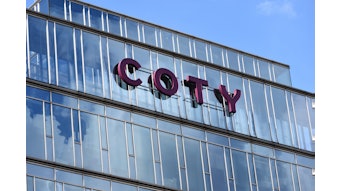There are hundreds of new cosmetic launches each year in the prestige arena alone. In order to achieve long-term success, brands require consideration at all stages of development—including initial conception, launch and entering new markets. Brands at any point of development share a common necessity—the integration of five fundamental elements to deliver a consistent message. These elements of success—a business plan, a point of difference, appealing packaging, market positioning and retail execution—must be developed to be consistent with the overall strategy to maximize a brand’s potential. To avoid falling short on expectations, a brand must develop and execute all elements with the ultimate retailer and consumer in mind.
Business Plan
Assimilating a marketer’s perception of its brand’s point of difference and market positioning is the first step in creating a business plan. In addition, the inherent tolerance for risk and horizon for profitability must be understood. Armed with this information, identify, evaluate and quantify the elements of a successful cosmetics launch. These elements include an illustrative founder profile, a defined target market, an effective marketing strategy, evaluation of the aesthetic appeal of packaging, retail pricing and positioning, and establishing a point of difference.
A business plan also identifies a suitable distribution channel, projects associated sales and expenses, and quantifies the necessary supportive financial investment. It also guides management and serves as a presentation tool to secure investment capital. Ideally, the business plan should be prepared before any material investment or premature expenditure of critical financial resources.
Point of Difference
At its heart, a brand’s point of difference lies in its inherent benefits, ingredients, technology and innovation. The combination of these elements will tell a story that attracts target consumers—as well as fill a critical void on a retailer’s shelves. This point of difference needs to be well-communicated in order to be understood. It should not be overly complex or foreign; conversely, it should not be too simple or overused.
Louhann, an innovative skin care line from France, illustrates a brand that presents a clear point of difference. The brand’s story is based on argan oil, which is extracted by cold pression from the nuts of the Argania spinosa—an endemic tree located mainly in southwestern Morocco. This oil is harvested from strictly monitored cooperatives and is exported in its purest form in very limited quantities.
The consistent use of argan oil in Louhann products, from the company’s Anti-age Crème to Dry Oil for Hair and Body, reinforces the credibility of the line. This message defines the brand as being at the forefront of the innovative application of this ingredient’s story. Louhann also has contributed to a heightened awareness of the virtues of argan oil in Europe through a well-defined product message. In the U.S., press and direct marketing will increase the public’s awareness of the uses and benefits of argan oil while expanding the company’s profile.
In addition to a brand’s product point of difference, it is equally important to capitalize on what is referred to as a brand’s retail point of difference. To summarize, it is helpful to understand the areas of growth and retail voids within the target distribution. This facilitates a more rapid placement of a brand based on filling such a void.
Packaging, Market Positioning and Retail Execution
Packaging plays a large role in a brand’s complete success. Some would say it accounts for up to 70% of the equation. A brand has a short window to express to the consumer its raison d’être, and a brand has one chance to make a first impression. Packaging must immediately translate a concise snapshot of the brand’s heritage, concept and quality. The aesthetic must appeal to and be understood by the target consumer. It is equally important for the packaging to meet a target retailer’s established expectations.
Successful positioning is the consistent thread weaving through every element of a brand. It is the clear message permeating the brand, where its place in the world is instantly and consistently understood. An inconsistency between elements, such as price versus packaging or formulation versus packaging, can create a lack of clarity. Such inconsistencies may cause a retailer to opt out and launch another brand. A brand’s positioning should be constant at every level.
Identifying the appropriate retail distribution from the onset is critical. While it is not necessary to identify specific retailers early on, the targeted channel of distribution should be considered and understood, and all decisions in brand development must have this eventual retailer in mind. For example, a brand targeting a prestige New York retailer would have a completely different investment in product, packaging and marketing versus a brand targeting moderate department stores in outlying markets. The key is to understand a retailer’s expectation and aesthetic while developing a brand. It should be noted that even within the same tier of distribution, retailers may have differing views on which products are befitting for their clientele. Partnering with a compatible retailer to support the launch is a critical piece of the puzzle.
Louhann, for example, is strategically aligned to Henri Bendel. Upon determining that the brand is a viable addition to its portfolio, New York City-based Henri Bendel served as the launch platform and showplace for Louhann in the U.S. Additionally, Louhann has parlayed its success in New York into an effective independent retail distribution nationwide.
Even with strong retailer support, it is expected that a brand has the ability and resources to take the lead in supporting its own marketing, promotion and publicity efforts. In addition, a retailing partner expects a brand to drive day-to-day sales with solid hands-on management. This is where many smaller brands fall short, making the critical mistake of believing the retailer will run their business for them. The retailer provides a venue to merchandise, and supports a brand within its structure, but the ultimate responsibility of driving the business always rests with the brand’s management.
There must be a consistent thread throughout each aspect of the line that assures a clear and concise positioning. A brand that applies the five fundamental elements of success throughout all stages of development will maximize its chances to attract and reach its target audience via key retailing partners. It will rise above the herd and build a loyal clientele for years to come. Consistency is success.










